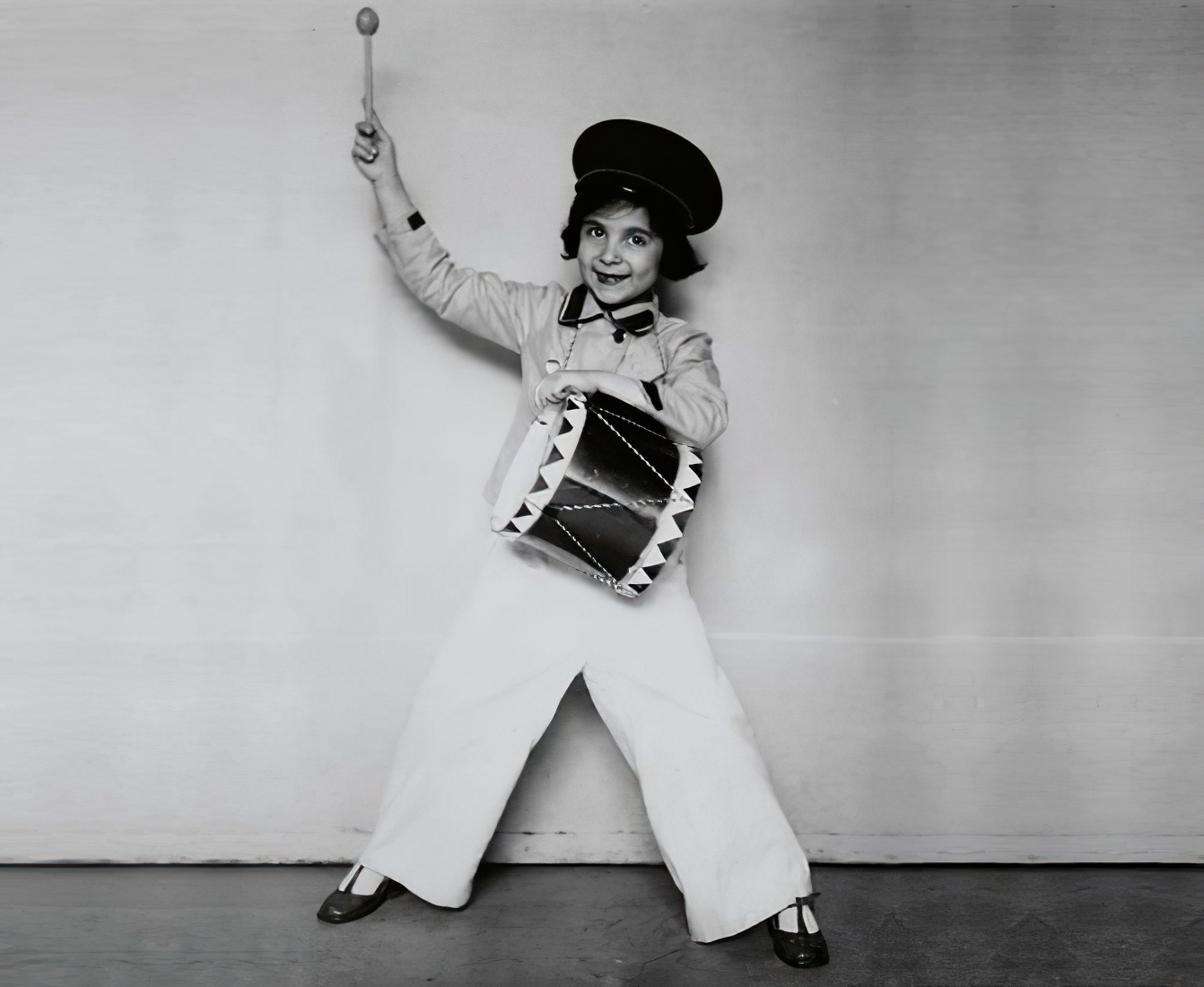Hailed as the "Croatian Shirley Temple", Lea Deutsch was a successful child star in dance, theatre and music, performing difficult roles by Shakespeare and Molière at an early age. Born in Zagreb on 18 March 1927, the daughter of Stjepan and Ivka Deutsch, she grew up in an educated and artistic family, where she became involved with the Croatian National Theatre HNK (Hrvastko narodno kazalište uu Zagrebu) at the age of five.
In 1941, with the establishment of the Independent State of Croatia (Nezavisna Država Hrvatska/NDH) and the implementation of Nazi-style racial laws, Deutsch was banned from the theatre where she had been a star. Her classmate recalled:
"She used to sit motionless on a bench across from the theater in a little herringbone pattern coat with a yellow star of David on her sleeves, staring for hours at the building where once she was a star, and now she couldn’t even enter the building."
Ante Pavelić's authoritarian Ustaše government, supported by both Nazi Germany and Fascist Italy, was based on Fascist and Nazi ideology and sought to "cleanse" Croatia of non-ethnic Croats, including Serbs, Jews and Roma, as well as ethnic Croats who opposed the regime. Between 1941 and 1943, her family tried unsuccessfully to obtain papers to leave for British Palestine, to convert to Catholicism, to join the partisans in Croatia, and to rely on fellow actors to save her family from deportation. Despite the intercession of the Zagreb Jewish community for Deutsch's and many other families, Pavelić faced increasing pressure to deport all remaining Jews in Croatia after a visit from Heinrich Himmler in May 1943.
The conditions for anti-Semitic persecution varied across Yugoslavia, with Jews being targeted for mass murder almost immediately in German-occupied Serbia and Croatia, but much more slowly in Hungary and Bulgaria. Jews under Italian rather than German control also faced less immediate violence. Lea Deutsch and her family were deported to Auschwitz in the same month, May 1943, where Lea died of starvation and exposure during transport. Her mother and younger brother Saša were later murdered in Auschwitz, and only her father survived the war. Like Anne Frank, to whom she is often compared as a sympathetic and young victim of the Holocaust, her father Stjepan has played an important role in promoting her memory and recognition, even in communist Yugoslavia. More than 30,000 Croatian Jews were murdered in the Holocaust, primarily at Auschwitz-Birkenau or locally in Croatia.
Deutsch's lack of recognition or memory in the West points to a larger problem of Holocaust memory in the former Soviet Union, and the overlapping and often competing politics of memory between Soviet and Nazi persecution. As Omar Bartov and Jelena Subotić have pointed out about the Semlin camp in Belgrade, it is a 'grotesque site of non-memory', despite the early and well-known internment and execution of Jews there. Furthermore, as part of the routinisation and development of Nazi killing techniques, the same gas van techniques that were tested in Semlin were then sent to Minsk after being used in the T-4 euthanasia centres in Germany and Chelmno. As Subotić argues, in the politics of memory in Eastern Europe, the equation of communism and fascism often appropriates Holocaust imagery to delegitimise communism in a process of historical revisionism. This often deliberately conceals the involvement of Eastern European countries in fascist crimes and elevates communist crimes to the level of the Holocaust, and is part of a deliberate political strategy of post-communist states.








